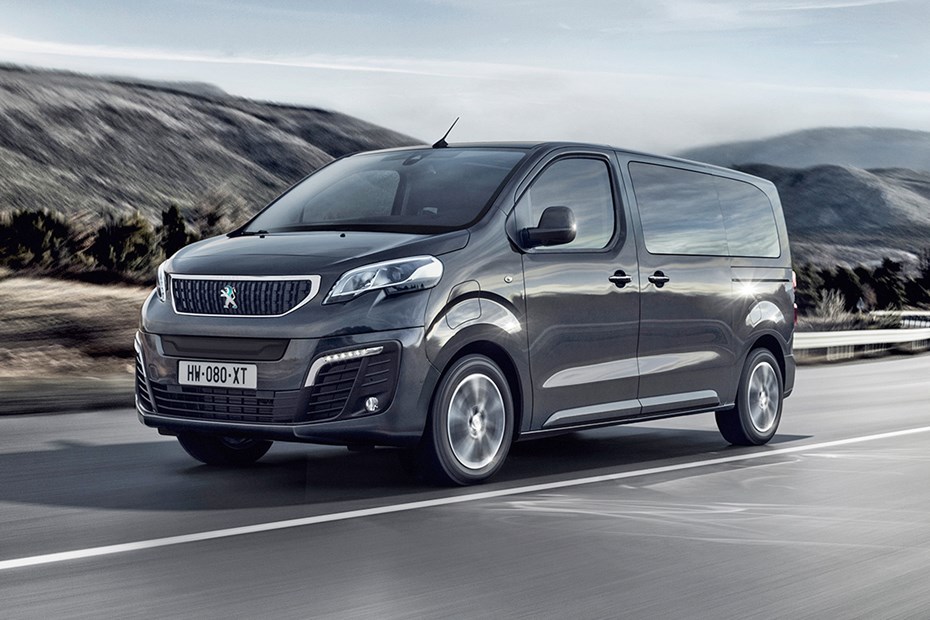It seems every car company is launching or broadening its electric car portfolio at the moment, with the battery powered Peugeot e-Traveller people carrier being one of the latest.
As its perpendicular styling suggests, the Traveller is an MPV version of the Peugeot Expert van, itself recently introduced in fully electric form as the e-Expert.
Given that close relationship between car and commercial vehicle versions, expect imminent announcements on electric versions of the almost identical Citroen SpaceTourer and Vauxhall Vivaro Life, too. Whether there’s an electric version of the Toyota Proace Verso remains to be seen.
How far can it go between recharges?
Whichever version of the e-Traveller you choose, it will come with a 50kWh battery pack that’s slotted in under the floor, meaning there’s no impact on passenger or boot space.
Peugeot claims it has a range of up to 143 miles, which will inevitably limit its appeal. While most people’s daily journeys are less than a tenth of that figure, it would make longer family excursions more challenging as you’ll need to find somewhere to charge it along the way.
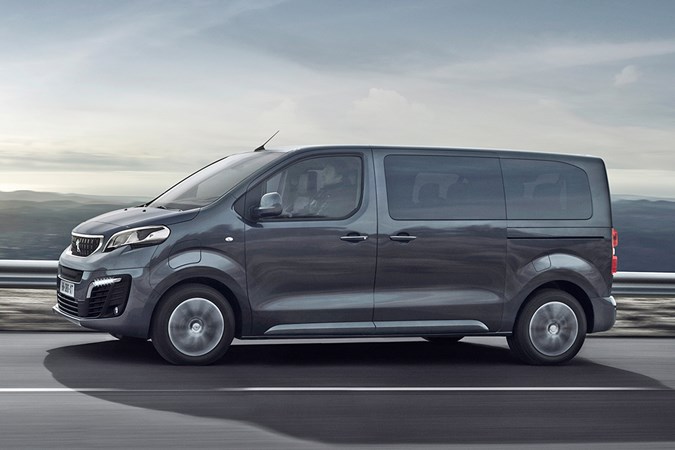
However, for VIP shuttle use within major cities and out to airports on the peripheries, it could be just the job.
That 143-mile range is entirely dependent upon how quickly it’s driven, of course, and Peugeot has engineered three driving modes into the e-Traveller, each with a different power output – the less power you use, the further you can stretch the battery’s reserves.
Eco provides 81hp and 180Nm of torque for the most range, Normal has 109hp and 210Nm for what Peugeot describes as ‘everyday use’ and Power with 136hp and 260Nm for unfettered performance. For reference, the 0-62mph benchmark sprint takes 13.1 seconds.
Additionally, the level of brake energy recuperation – where otherwise wasted energy is harvested back into the battery – has two settings.
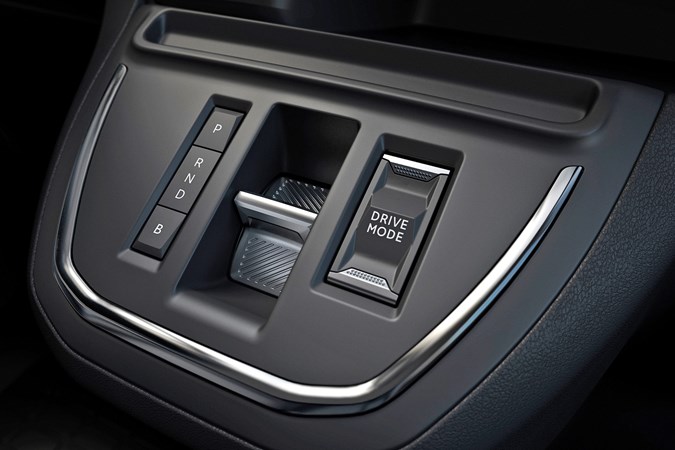
Moderate has a minimal braking effect when you lift off the throttle, while Emphasised – activated by pressing a button marked B next to the e-Toggle rocker switch gear selector – increases this effect when the accelerator pedal is released.
How long does it take to charge the e-Traveller?
Rather than using the fuel filler location on the rear wing, a charging port has been installed on the front wing, just above the left wheel. That means you’ll need a shorter distance to stretch a cable to a charger, but it’s likely to mean you’ll have to drive forwards into parking bays.
How long it takes to replenish the batteries depends on the type of connection you use. Most people will have a dedicated home wallbox installed: for a 7.4kW one a full recharge will take 7 hours 30 minutes, dropping to 5 hours for an 11kW version.
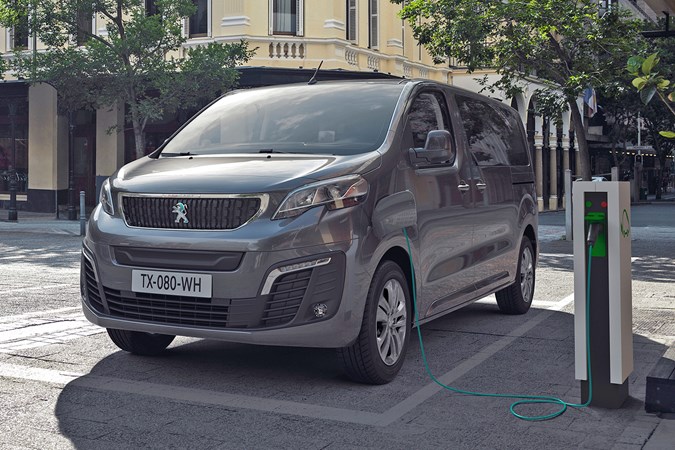
One of the newer 100kW public chargers will allow you to get back up to 80% of the battery capacity in just 30 minutes.
A conventional three-pin electric plug? Stick to this only if you’ve no other option as it will take around 31 hours to go from flat to full.
What else is different the e-Traveller?
As with diesel-engined Travellers, the electric model comes in two lengths, with either seven or eight seats, and up 74 litres of interior storage space for all manner of family detritus.
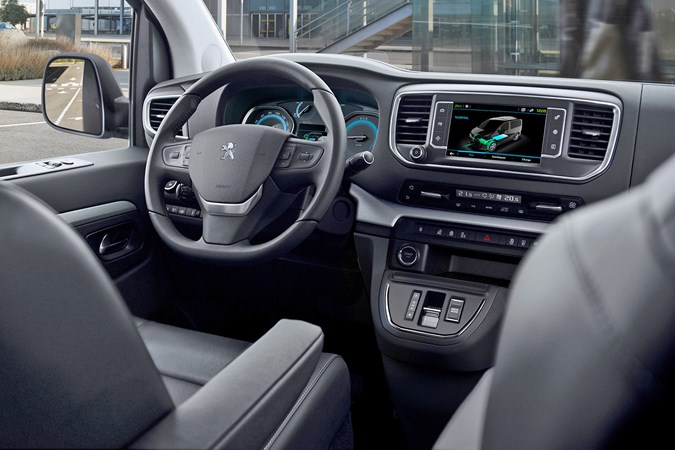
While the e-Traveller looks very similar, it is subtly differentiated by blue and silver badging, a unique grille, electric-specific gauges to show range and battery reserves and an electronic parking brake.
What’s more, using a smartphone app, you can pre-heat the e-Traveller on colder days while it’s still plugged in, meaning the cabin can be warmed without depleting the battery reserves.
What this means for you
If you’re going to drive the e-Traveller to ferry large numbers of passengers, primarily for low-speed, shorter journeys that are typically experienced in urban environments, then this electric newcomer makes sense.
However, its appeal falls into a somewhat narrow niche given the diesel-engined versions aren’t hindered by such modest mileage restrictions.
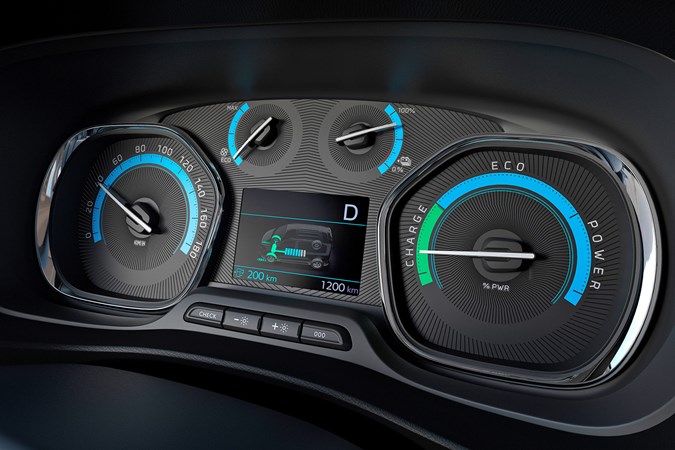
Plus, if you want an electric car of this type that can go further between recharges, Mercedes-Benz’s forthcoming EQV has a claimed range of 248 miles – more than 100 over the Peugeot.
Still, the EQV is likely to be pricier than the e-Traveller. While we’re waiting for prices for both to be confirmed, expect the Mercedes to be in the region of £60,000-£65,000 compared with circa £45,000-£50,000 for the Peugeot when it arrives towards the end of 2020.
Parkers will be among the first to drive the electric Peugeot e-Traveller, so keep this page bookmarked for the latest news and views.
Further reading
>> We look at the best electric SUVs on sale
>> How good is the colossal, but expensive, Tesla Model X?
>> Find out how much your car is worth with a Parkers valuation
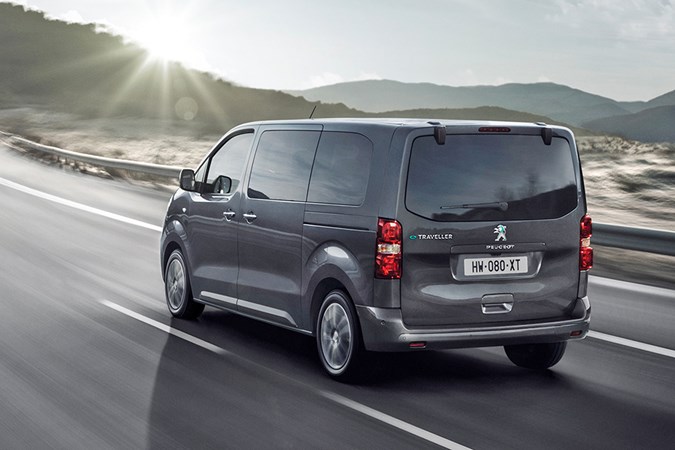
Just so you know, we may receive a commission or other compensation from the links on this website - read why you should trust us.


